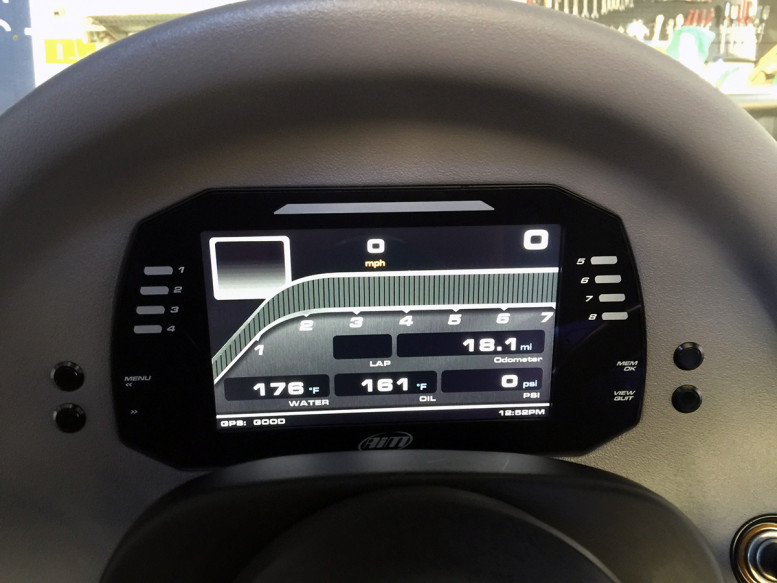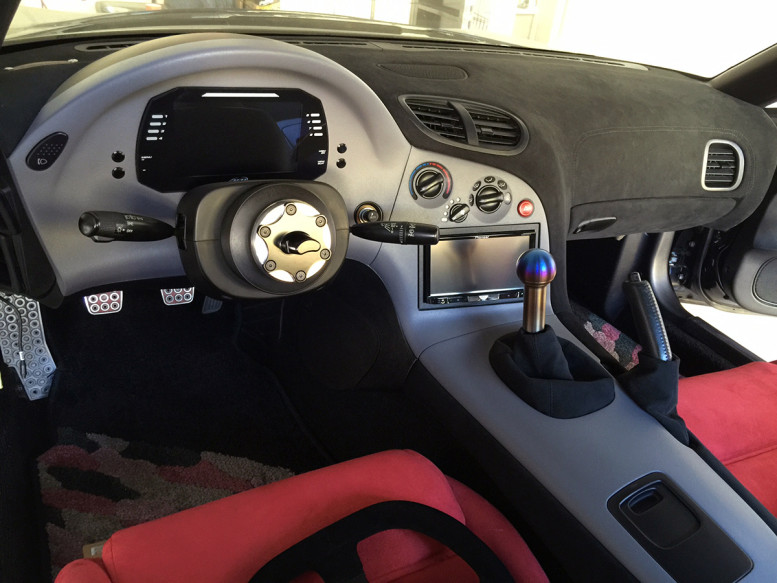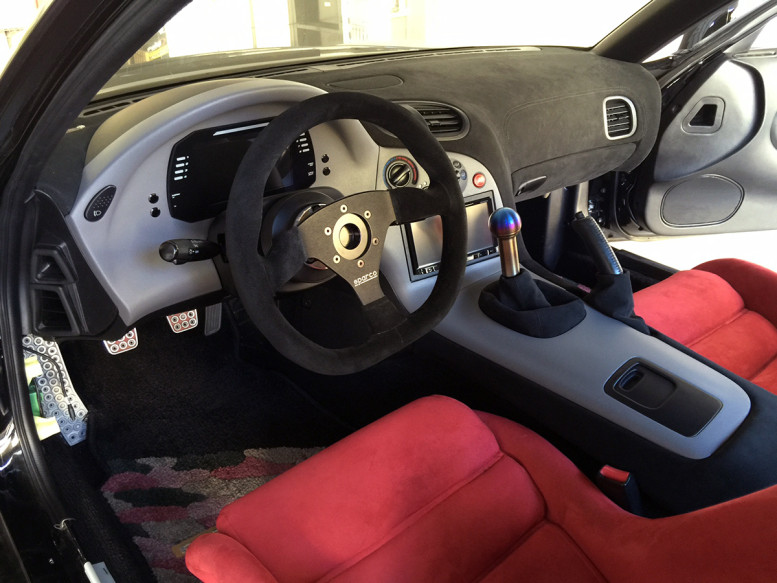I am so fond of the RX-7 because it harks back to the heyday of proper, driver-oriented motoring. It is modern enough to capture refinements in certain technological methods, but old enough to escape to the clench of restrictions and dummy aids.
However, the fact remains that this is now a 20+ year old car, and with age comes its own set of limitations. I’m all about retaining the original appeal from a foundational perspective. Everything else, according to my mindset, could use an upgrade or two. This was especially the case with the factory gauges.
Trying to tie in and adapt the factory gauges with the LS3 swap always seemed like a short-sighted solution. Why upgrade to a modern engine platform but still use antiquated analog gauges from the early 90s? Plus, we had difficulty getting certain gauges like the coolant temperature to work. And even if they did function, their readings were mostly useless because the needles reacted so slowly.
Not only did I want to have all the important engine readings in front of me, I wanted them to be real time and precise.
Relatively speaking, innovations in the automotive field advance at a slower rate. Previous and existing dashloggers have been around for years with virtually no change. When I came upon the AiM MXG, I knew the answer had been found. Although on the pricier side, being such a newly released product secures itself as an investment. Best of all, it features a high contrast TFT display in full color. A far cry to the offerings of comparative products, with monochromatic displays reminiscent of calculators. (I’m looking at you, Stack Multi Function Display)
Now, water temperature, oil temperature, and oil pressure are all displayed directly in front of me, real time with a 10-20hz (could go way higher, but that would be overkill) sample rate. The RPM signal is pulled right from the ECU. The Speedometer is powered by the GPS system. There is even the bonus of having a gear indicator, which is currently configured off a mathematical preset based on transmission and final drive ratios. I can finally and officially drive the car with the peace of mind of knowing what’s going on with the engine.
There is a RGB shift light array at the top with programmable LED alarm lights at the side. I patched in the 1 and 5 alarm lights to the left and right turn signals, respectively, and they act as indicators now. The remainder of the alarm lights are set to various behaviors: low fuel level, engine warm-up, low battery voltage, high water & oil temperatures, and low oil pressure.
Here is the interior put back together in all its glory, well, with the exception of the driver side door panel. I’m still waiting on that to come in from Toby. I also gave the interior a much needed cleaning, attention shall be turned to the exterior next.
In these pictures, the grey color of the panels look brighter/lighter than what they really are. I blame my cell phone and the lighting. I recommend referencing the pictures from previous posts to get a more accurate depiction of the color.







Love the look of the interior! The MXG really updates things. Can I ask where you got the dual din stereo bezel? It looks nicer than some others I’ve seen..
That was part of the Pioneer Double DIN install kit. Do a search for it and you should be able to find it.
What did you do for turn signals? Are they part of the circuit? As in, will the exterior markers still blink without the cluster lights plugged in.
Yes they will. The blinking of the cluster lights is only tied into the relay near the CPU #2, opposite of the circuit that goes to the lights themselves. I tapped into the same circuit as the original cluster lights and the AiM is internally fused and was able to translate the voltage.
Sweet man good info, I’m trying to add aftermarket lights to my cluster after molding a tablet into it, thanks
have you been able to make the fuel level gauge work with the mxg?